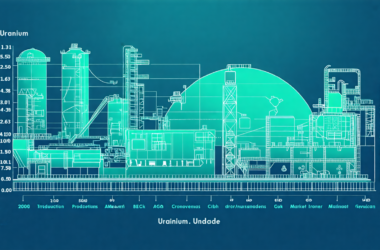Mining operations at the Pinyon Plain uranium mine in northern Arizona are in full swing, with miners working deep underground to access the high-grade uranium ore. Unlike strip mines, this underground mining operation has a minimal surface impact, only covering 14 acres.
The geological formation at the mine, known as a “breccia pipe,” is about 250 feet in diameter and extends vertically down some 3,000 feet. Miners use a vertical shaft drilled and blasted down 1,470 feet to access the ore body. Horizontal tunnels called “drifts” are then drilled and blasted into the breccia pipe to reach the uranium ore.
The extracted ore is brought to the surface using an elevator suspended by a cable and transported to the company’s White Mesa uranium mill in Utah, where it is processed into uranium oxide, also known as “yellowcake.” Energy Fuels Resources Inc, the Colorado-based company behind the operation, is at the forefront of the uranium mining battle near the Grand Canyon.
Geologists have discovered that some of these breccia pipes contain uranium at incredibly high concentrations, with others containing various minerals like silver, copper, and zinc. The state mining permit limits the mining to no deeper than 1,997 feet to protect the underlying aquifer.
The unique geological history of the region has led to the formation of these valuable mineral deposits, providing a glimpse into the Earth’s ancient past. As miners continue to extract the ore, they must navigate the complex network of breccia pipes to access the precious resources deep underground.










